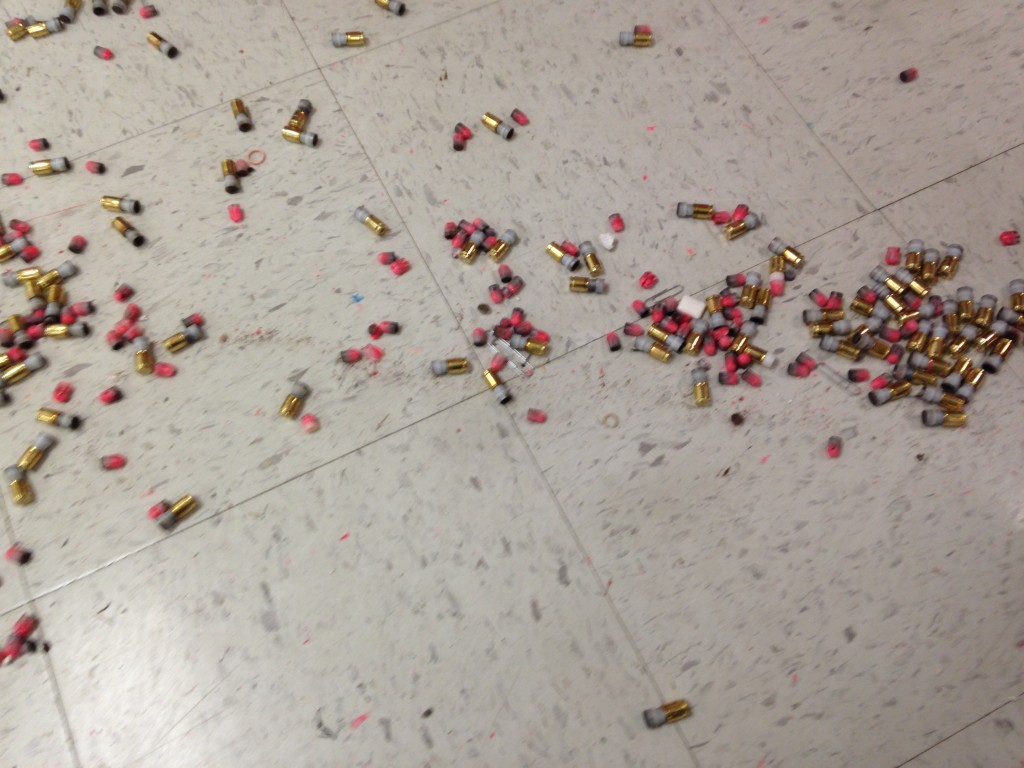 Force on Force is some of the most important training out there in my opinion. For those who carry a gun for defense or for work, it is the closest thing to the real thing going if done correctly. It also vets what we think will work in square range drills, against what happens against the living and breathing who shoot back.
Force on Force is some of the most important training out there in my opinion. For those who carry a gun for defense or for work, it is the closest thing to the real thing going if done correctly. It also vets what we think will work in square range drills, against what happens against the living and breathing who shoot back.
Some tips to make your FoF training successful-
Avoid “paintball wars”. We know. Extended, protracted gunfights are fun in training. But, for several reasons they should be avoided. Cost of ammo (Simunitions) is a big factor. At nearly a dollar a round, we can be smarter with our scenarios.
Make most of the scenarios win-able. I didn’t say easy, I said win-able. If you burn down your students at each chance, if for nothing more than the opportunity to put some ringworm marks on your coworkers for sticking you with a call they should have taken last night, well, you probably aren’t teaching many lessons. (except maybe they should have taken that call and not dodged it). Have the role players give them the chance to solve the equation in real time. Set a time limit. “They have X amount of time once they cross the threshold to react to A, B, and C. If they fail to give commands or address threats, shoot them to the ground”. Or something of the like.
Use role players if available who aren’t cops. Around any Crossfit box (at least that is where we seem to find them) who are game to sign a waiver, and burn some of your Sims shooting at the PO-LICE. It is a great training tool. They don’t think or act like cops, which makes them a bit unpredictable. The guys and gals do a great job as role players with simple orders.
K.I.S.S. I went to a school one time where a scenario required two man room entries. Two of us dumped into a room with hostage and hostage taker. The hostage taker only provided about a quarter of a head to shoot at, all the while the hostage was strung from the ceiling on his tippy-toes attached to “device”. Yeah, sometimes they are no win situations, but it doesn’t do much for training except to teach us there are no win situations. I think I could have figured that one out for myself.
Force on Force is great training. Make the most of it each time you get to do it.



Good topic. One of the best things I ever did with my guys running FoF with Sims is that the officers would get one round of Sims in their long gun and one in their pistol, and the bad guys working against the team got a fully loaded 6 shot .38 revolver. If you want to see “paintball wars” and stupid tactics go away, and all of a sudden outstanding execution of team tactics and the use of sighted surgical shooting….go to single shots.
As far as role-players, they were always an issue. Either way too aggressive (you can be reckless if you know you aren’t going to get hurt), or way too creative with unrealistic “stunts”. I found that using good Use of force (firearms or DT) instructors with very well set goals and who will stick to the “script” end up being the best for actual training and emphasizing particular skill sets. We found “small bites” or running several small scenarios that ranged from a total non-force scenario (like a person walking up and asking officer for directions………it’s almost funny when this is the first scenario to get students to settle down) to very directed lethal force level encounters with an emphasis on solid decision making and then proper application of lethal force with good surgical shooting. I have found the big free for all “we’re taking down an entire school with active shooters” loose way too much on the training side due to having too much to manage and correct because of the shear size. I think those are better done with blue guns than Sims for maximum training value.
I assisted with training for the Ramsey County Sheriffs last spring. I was given a sims gun, but no ammo (they didn’t want to armor up the responders) and set out to be the car stop subject. The trainers and I discussed before each drill if I should cooperate, come out with a hidden weapon, or come out aiming, to be shot by the car stop trainees.
They felt it was good training, and I was happy to be a the training subject, but I learned to wear the gloves all the time ( I had to wear body armor and the face mask each time so as not to give away my intentions). Getting shot on the knuckle with a sim stings, but it’s a lesson I had to learn for myself. The sharper patrol trainees also put several into my shoulder above the vest as I twisted and fell as they shot me. I learned to drop straight down and keep my vest forward. The welts were visible for a few days, but it was worth it.
Matt
RCSO Reserve
St Paul